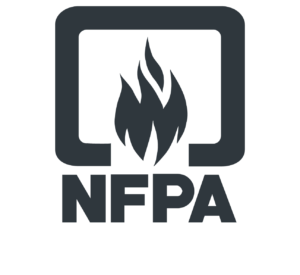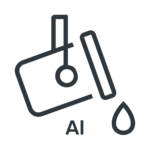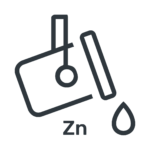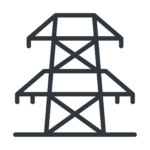Protective clothing for use at electric facilities exposed to electric arc and related thermal risks
The NFPA 70E standard specifies the minimum protection levels that must be met by garments and fabrics when presented with electric arc and related thermal risks.
REQUIREMENTS FOR NFPA 70E STANDARD CERTIFICATION
Within NFPA 70E, there are two requirements standard to comply with depending on the final garment application:
- ASTM F 1506. Standard Performance Specification for Flame Resistant and Arc Rated Textile Material For Wearing Apparel For Use By Electrical Workers Exposed To Momentary Electric Arc And Related Thermal Hazards.
- ASTM F 1891. Standard Specification for Arc and Flame Resistant Rainwear.
ASTM F1506:
Fire-resistant textile materials for items of clothing to be used by electric workers exposed to momentary electric arc and related thermal risks.
DESCRIPTION
TEST METHOD
MINIMUM COMPLIANCE VALUES
ASTM D5034
American standard that describes the test method for traction resistance.
Traction resistance for woven fabrics must be:
(3 – 5.9 oz/yd²) ≥ 134 N
(6 – 8.4 oz/yd²) ≥ 179 N
(8.5 – 5.9 oz/yd²) ≥ 223 N
ASTM D1424
Standard American test method to measure fabric resistance with a falling-pendulum type (elmendorf) apparatus. Each layer of fabric must be subjected to this test if the garment is constructed of several separable layers. Five samples in each direction (warp and weft) are tested.
Tear resistance for woven fabrics must be:
(3 – 5.9 oz/yd²) ≥ 11 N
(6 – 8.4 oz/yd²) ≥ 18 N
(8.5 – oz/yd²) ≥ 22 N
ASTM D434
Standard American test method to determine slip resistance for threads in woven fabrics using standard sewing methods.
Slip resistance:
6 mm maximum value
AATCC61
Test method to determine colour-fastness upon industrial washing.
For woven and knitted fabrics:
Class 3 minimum
AATCC132
Test method to determine sturdiness upon dry cleaning.
For woven and knitted fabrics:
Class 3 minimum
AATCC135
For woven fabrics:
< 3%
ASTM D6413
Flame resistance. Charred length ≤ 150 mm (6 inches).
Each individual layer must be tested.
Five samples must be analysed in each direction in the original state and after 25 washes.
Requirements:
Charred length ≤ 150 mm.
Post-combustion < 2 s.
Does not melt nor drip.
ASTM D3786
Test to determine bursting strength of fabric.
For knitted fabrics:
(3 – 8 oz/yd²) ≥ 179 N
(8,1 – 16 oz/yd²) ≥ 268 N
ASTM F1959
Arc classification test.
Three samples are needed for the arc test to determine the post-flame average for which the incident energy is greater than or equal to the ATPV or EBT.
| Risk category | Arc classification |
| 1 | 4 |
| 2 | 8 |
| 3 | 25 |
| 4 | 40 |
For single-layer samples:
For woven and knitted fabrics: post-combustion ≤ 5 s.
ASTM F1891:
Standards for impermeable clothing for arc flash and flames.
DESCRIPCIÓN
TEST METHOD
MINIMUM COMPLIANCE VALUES
ASTM D3393
FTMS Nº 191A
Method 5516
Test method for determining leak resistance of fabrics and zips.
The impermeability of a fabric for rain must withstand a water pressure of 207 kPa without losses or leaks.
The impermeability of stitching must withstand a water pressure of 20.7 kPa without leaks for 2 min.
ASTM D1117
Standard American test method to determine trapezoidal tear resistance of impermeable fabrics.
Trapezoidal tear resistance ≥ 6 lb or 26.7 N in the directions of warp and weft.
ASTM D1388
(Optional)
Test method for determining rigidity of fabrics against rain.
Cantilever test. Option A.
This test consists of measuring fabric rigidity.
Samples of 25 mm x 150 mm were used.
ASTM D6413
Flame resistance. Charred length ≤ 150 mm (6 inches).
Five samples must be analysed in each direction in the original state and after 5 washes.
Whether the impermeable clothing is constructed with a single layer of material or a multi-layered system of materials, a sample of one layer of the various layers of the impermeable clothing that has been constructed must be subjected to all thermal tests. If the manufacturer does not provide cleaning instructions, the garments must be washed three times in accordance with Method 135 of the AATCC, followed by drying.
Requirements:
Charred length ≤ 150 mm.
Post-combustion < 2 s.
Does not melt nor drip.
ASTM F1959 / F1959M
Test for electric arc classification.
The test must be performed after 3 washes followed by drying in accordance with the instructions for care from the manufacturer. If cleaning instructions are not provided, the fabric must be washed in accordance with Method 135 of the AATCC (3, IV A iii) followed by drying.
Electric arc classification ≥ 5 cal/cm² (20.9 J/cm²):
Does not melt nor drip.













